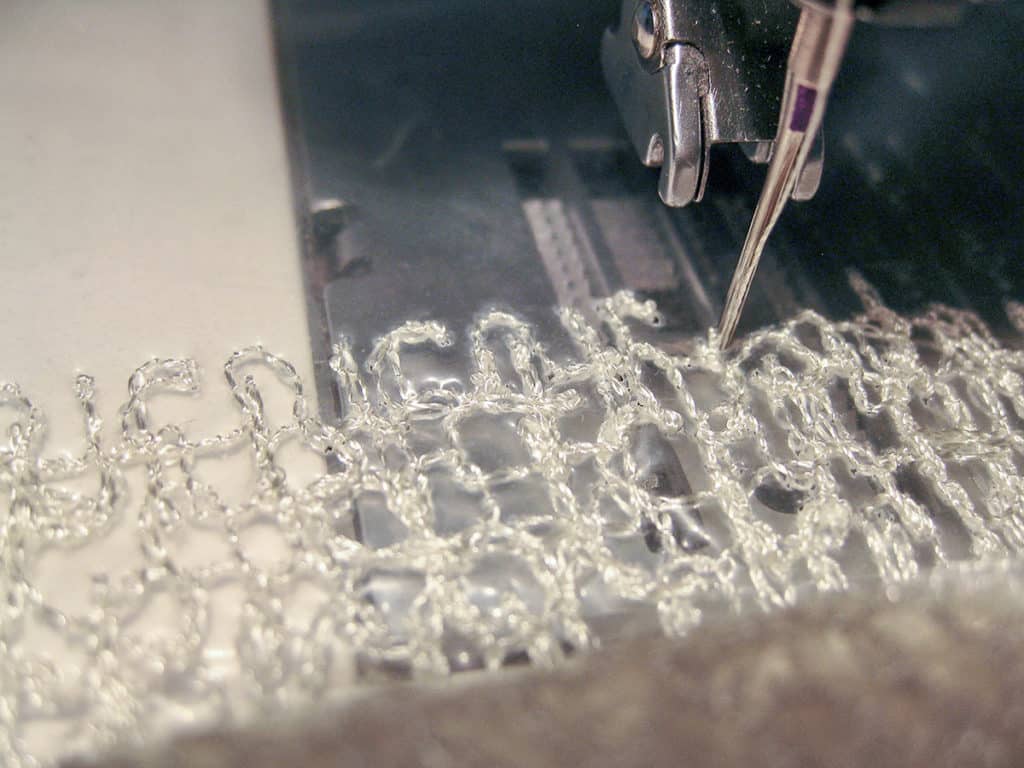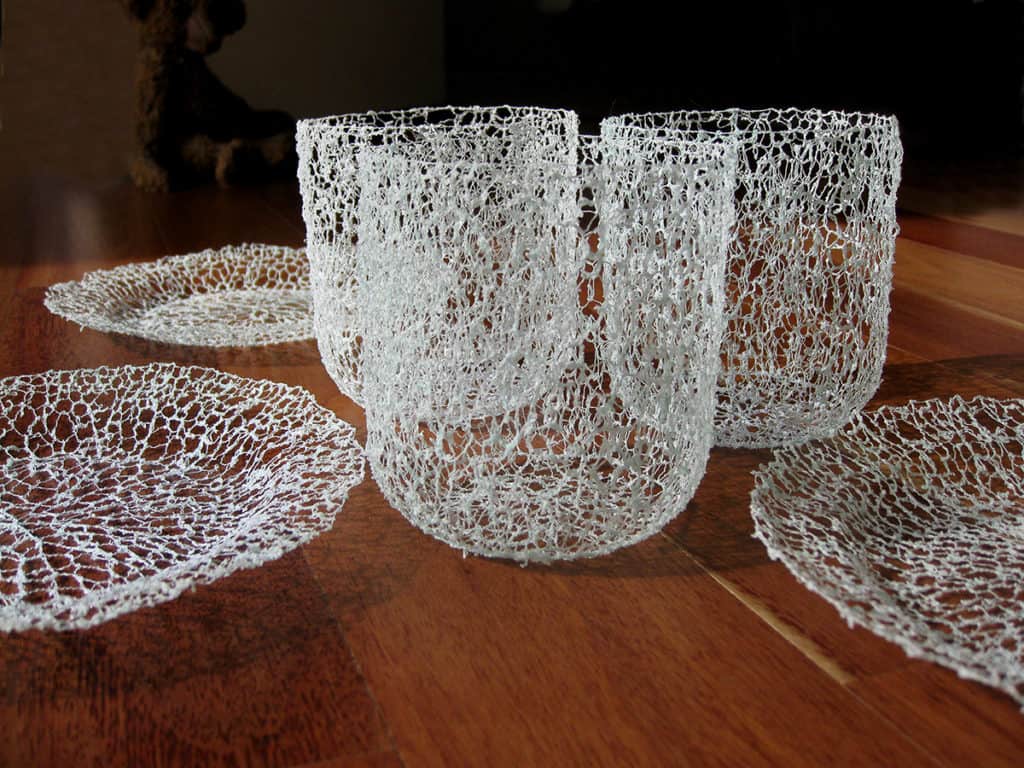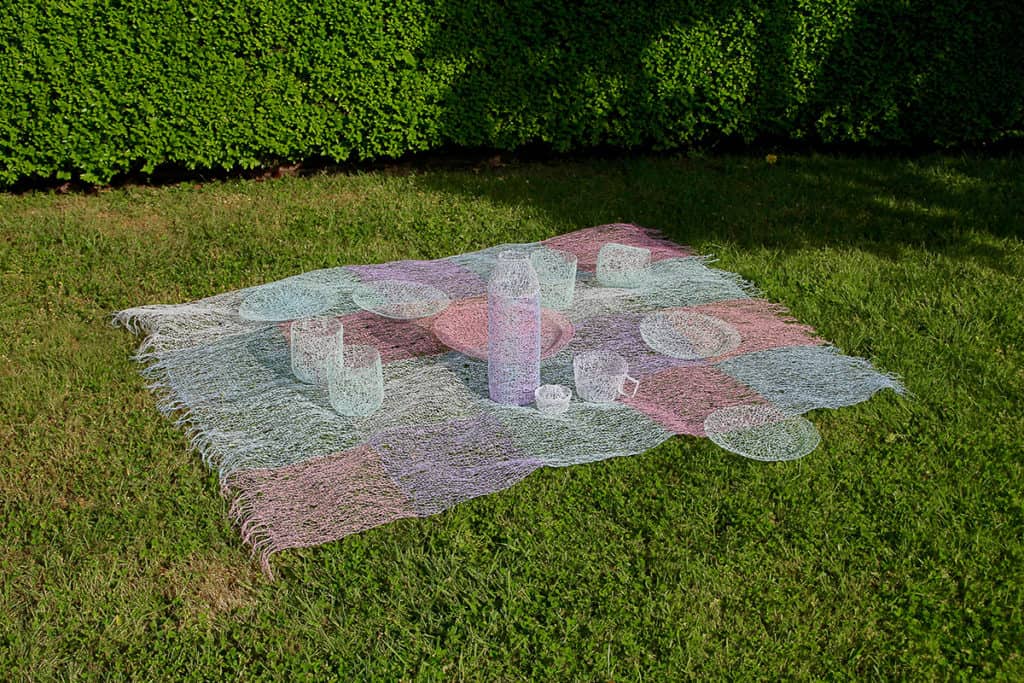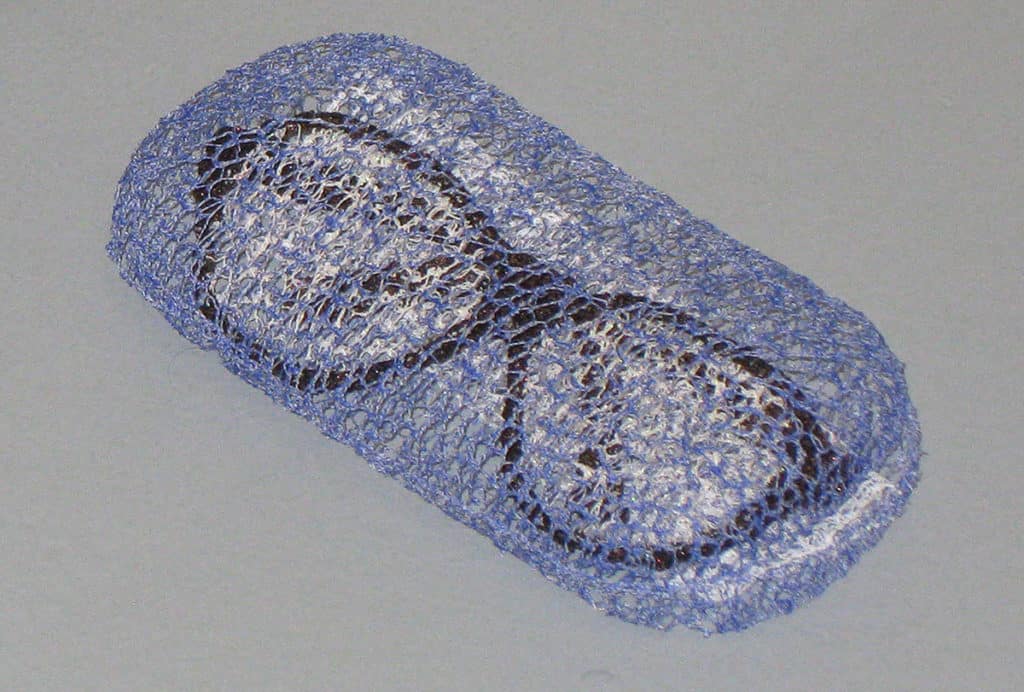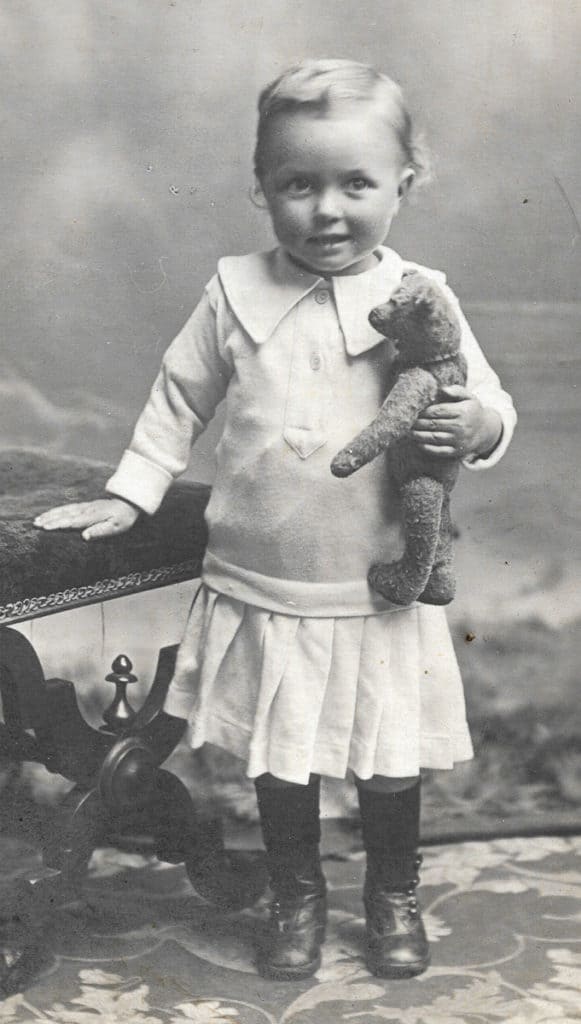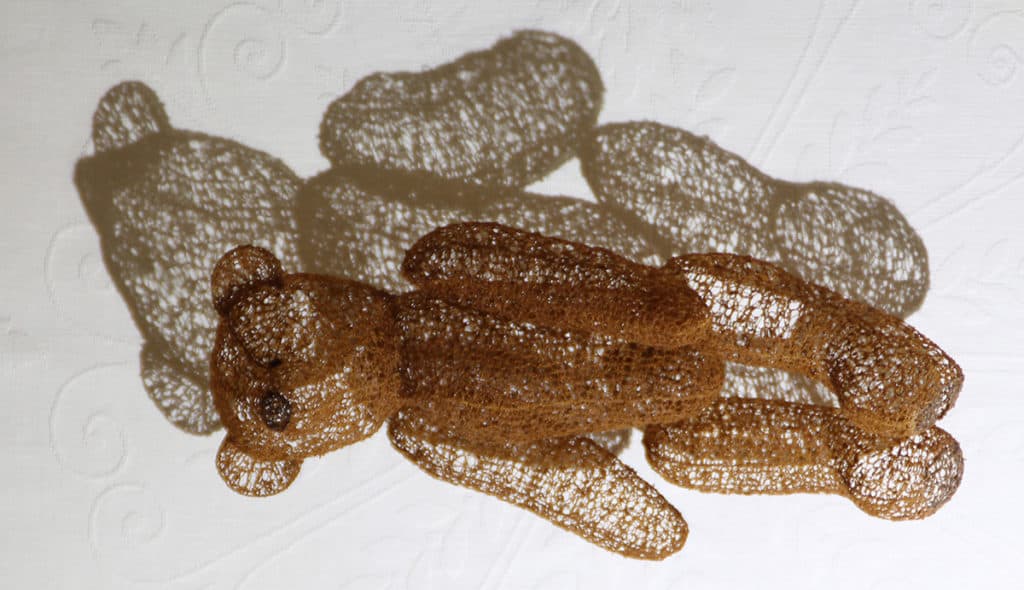As an artist, my key areas of interest have been memory, archive and trace. The concept for my research project Museum of Emotion: Artefacts of Separation and Memory, began to develop after reading Margaret Humphreys’ book Empty Cradles, (1994). In her book, the British social worker recounts the stories of her investigations into the experiences of the British Child Migrants. My personal connection to this book is my half-brother, who was taken into the care of the Wiltshire County Council on 11 September 1954 and potentially could have been a British Child Migrant.
My sister and I grew up with loving caring parents, both of whom had been married before. My family’s skeletons were never closeted. I don’t ever recall a time of not knowing that I had half-siblings. My parents’ past was not seen as shameful, even if it was a taboo topic of conversation for probably most people at that time.
On 20 July 1951, at the age of 19, my mother, her husband and their daughter arrived in Fremantle having travelled as ten-pound POMs aboard the ship Chitral. Life was not easy for her in Australia, and after miscarrying twins, their son was born in Perth on 13 July 1953. Before my half-brother was a year old my mother had returned to England with her two children. On 30 June 1954 a request was filed for my brother to be offered for adoption. My half-sister was raised with our uncle as a sibling by our maternal grandmother and step-grandfather. We saw her regularly, but I never knew what happened to my half-brother. With no means of tracing him, he was absent throughout my life.
Fast-forward to 1989 and I too became a British migrant with my husband and young family. We experienced the disruption and dislocation from extended family, home and place. Familial objects brought with us in our luggage, and the remainder of our worldly possessions arriving months later, provided us with psychological and emotional support at a time of major transition.
In April 2012, The Immigration Museum, Melbourne hosted a travelling exhibition called On Their Own. I saw the exhibition about the British Child Migrants and booked to attend two of the talks. Coincidentally, this was the same time that I met my half-brother for the first time.
Abstract
Museum of Emotion: Artefacts of Separation and Memory is the title of my recently completed Master of Fine Art (by research) project at RMIT University, Melbourne, Australia. I looked at the possibility that objects, when understood as retrieval cues for memories, may elicit psychological benefits and provide connections to an individual’s past. Objects are integral to our life story and help to form our individual sense of identity and ability to establish a sound psychological foundation. Transitional objects are an important related category of objects that I identified in this research. The concept and use of transitional objects and their related phenomena during infancy is well researched, whereas the impact and importance beyond infancy is less established. My study researched this phenomenon through the making process and the creative artefacts I made.
My methodology synthesised established areas of research on memory and psychoanalysis from the perspective of a practice-led investigation. This article focuses on the process of making Picnic and ThreadBear, two of the five projects made for my research. Objects have been reimagined and re-made using machine embroidery thread and a sewing machine. Stitching and writing have been structured into artefacts to signify a trace of time, motion, emotion, absence and memory. Objects and images were sourced from my own archive of family photographs, recently acquired photographic slides that did not represent my childhood experiences, as well as my memory and imagination. It is the exploration of the retrieval cue for memory and the adult version of the transitional object that is significant and key to my research, which seeks a deeper understanding of transitional objects during any stage of life. This research contributes to the fields of fine art, memory and psychology.
A teddy bear, soft toy or blanket are all classic transitional objects for an infant. In this article I discuss the creative process of making two projects, one of which is a teddy. The idea of re-making the teddy seen in a family photograph was as a retrieval cue for memory and not a transitional object. The role of a transitional object particularly for an adult is understood to assist with the development of an internal psychological support system. The system aids the assimilation of something new into the psyche which changes our perspective and way of being in the world. Through my research and interaction with materials and the fabrication of artefacts my understanding and practice developed. It is this interaction that is perceived as Winnicott’s “intermediate area of experiencing” and “transitional phenomena,”1 which helped me to assimilate the lost childhood experiences and missing memories, that were a consequence of my brother’s adoption.
Unlike the tangible physical evidence that something did or does exist, my project seeks to activate the intuitive, implicit or tacit trace and archival qualities of an object. These phenomena are connected to an “intermediate area of experience”2 and memory recall, drawing attention to the temporal gap of disconnection and absence that exists between the collection of an “original” object and its reimagining and re-making.
Creative Projects
My creative projects explore the possibility and means that art objects, which I refer to as artefacts, may provide a psychological support to aid with the construction of memories. Picnic and ThreadBear are a generic representation of a referent object and were made with the aim to provide opportunities for open and imaginative personal readings. Engaging with absence and memory, they seek to provide a liminal space, allowing for the addition of the cultural fabric of an individual’s interpretation. They reference the past and its connections with the present by encouraging the memory process by means of an emotional arousal trigger or retrieval cue.
My artefacts are fabricated using alternative materials from that of the original referent object. Machine embroidery thread is used to bring together tacit knowledge and new ideas about the psychological self. This approach aims to encourage the role of the body as an alternative mode of knowing and understanding. Engaging multisensory and sensorimotor processes, feelings, emotions and affects. A function of thread and fabric is to provide warmth and comfort and is used in order to elicit a somatic connection to family, home and culture. Knowing and meaning are stitched into Picnic and ThreadBear through their materiality, in the language of art. In the opinion of author Simon O’Sullivan, the experience of art is not to make sense of the world but is a “function of transformation” … “more involved in exploring the possibilities of being, of becoming, in the world.”3 The immanent aesthetic capability permeating my artefacts aims to elicit a moment of intensity or an affect. O’Sullivan proposes that the affect is “[t]he matter in us responding and resonating with the matter around us.”4
The key process for my creative practice is searching out and identifying retrieval cues, which are reimagined and fabricated with a network of embroidery thread. This not only echoes an engram, which is the network formed in the brain that creates our personal reality of a moment or event, it may also be suggestive of a network of neurons. The thread fabric considers the way we remember, which is a subjective reconstruction of events, evolving with the complexities of time. The reconstruction process is described by philosopher Mark D. Reid as “a dynamic interaction between experience and recollection.”5
Picnic
Repetitive Threads
The first creative project Picnic was developed by examining the contents of 14 boxes of family photographic slides sent to me by my brother who was placed for adoption as a baby. Looking through slides of previously unseen familial people and places, I noticed that the family picnic was a regular event that was consistently repeated over many years and would have created many memories. This photographic story was not connected to my childhood memories and therefore I felt I could remain objective as I imagined and re-made artefacts. It was not my original or primary intention for this project to be autobiographical. However, through engaging with my brother’s memories, I realised that his 54-year absence in my life was indeed a significant part of my history and therefore a key driver and motivation for the research.
I contemplated and reimagined a simplified generic picnic set as an artwork. The fragmented and repetitive reconstruction of memory was reflected upon and considered as an important outcome of this project. Combining these ideas, four non-functioning plates and cups were interwoven with the idea of them seeming real, at least in size and shape.
These plates and cups are more absent than they are present with their gaps and holes they are unable to hold anything. My physical absence at my brother’s family picnics is implied through their fragility. Shadows add a dynamic yet ephemeral element as another layer. Picnic seeks to blend notions of domesticity in the art to act as a retrieval cue to remember family occasions and eating outdoors, which is popular in both England and Australia.
Trace of the Hand
Writing Fabric
A fragile fabric was created for this project by writing the word “picnic” continuously on a dissolvable stabiliser with a sewing machine and embroidery thread. During this process my attention was completely focused on forming the stitched letters. At first, I considered writing my thoughts and/or memories to develop the fabric. The aim was to intertwine my brother’s past with my own by using his photographic images; his memories with my actions. Sewing together the joint absence of what would otherwise have been a shared childhood and the individual memories that would have been created for us both. However, writing was less spontaneous than I anticipated so it was revised to writing “a family picnic”. The ascenders and descenders of the letters and the continuous rows of stitching produced a lumpy and unsatisfactory fabric which was distracting rather than enhancing the perception of absence, temporality and memory.
The process of making the thread-fabric is laborious and tedious but with repetition came familiarity, experience, and muscle memory. To expedite this method of making I listened to the audio book, In Search of Lost Time by Marcel Proust, the single word “picnic” became a mantra which allowed my mind and thoughts to wander, whilst still being engaged with the writing/sewing process.
The appearance of the completed fabric was stiff but at the same time fragile and ephemeral. The shapes and their presence described the original objects seen in the photographic slides yet were perforated with gaps to highlight absence. Additional objects observed many times in the original photographic slides, were trialled and made using the same process of writing fabric, to then be constructed as three-dimensional artefacts. Objects included a transistor radio, thermos flask with lid and cup, a handbag and contents (lipstick and compact), a pair of glasses, cleaning cloth and glasses case.
The fragile open-weave and pastel-coloured thread of the fabricated artefacts produced see-through layers of thread with different optical challenges and interesting shadows. The optical interplay of multiple layers that are simultaneously visible suggested associations of memory and absence by being ‘there, not there’. The repeated writing and repetition of making these artefacts communicates the time passed in the making process as well as an expression of a bygone era.
ThreadBear
Shadows of the Past
My second project ThreadBear expands upon the possibilities of the text-based thread-fabric. Comprehensive explorations continued using the fragile thread-fabric to construct enclosed three-dimensional artefacts.
The teddy bear is evocative of childhood, and is a classic childhood transitional object, which is why it was chosen for this project.6 The image of the bear used as a referent for this project came from a studio photograph of my (and my brother’s) maternal grandmother. This bear was probably a studio prop but is never-the-less connected to both of us through this photograph of our grandmother.
The process of sewing and writing with embroidery thread and a sewing machine for Picnic was repeated to produce the fabric to make a teddy bear. The word “bear” was written instead of “picnic”. Interestingly, this did not appear to have an impact on the final appearance of the thread-fabric. Building a three-dimensional thread bear was a completely new and different challenge to me from the previous Picnic project. With no rigid structure, the handmade thread-fabric collapses once the background has been dissolved away; it is only the stitched words that keep the structure of the fabric together.
A calico bear was constructed to look like the bear in my referent photograph and was used as a mould. Wax was applied as a release agent and to provide a water-resistant surface. For each limb and body part, thread-fabric was made, stitched, washed, stretched, moulded, and dried; once dry they were un-stitched and removed from the mould. ThreadBear’s limbs and body parts were then re-stitched and re-assembled. This practice-led research examined what might be recovered from an object by transforming it through the process of building a bear, disassembling it, stitching thread-fabric and re-building the bear. The solid or whole bear transitioned into a fragile trace of the original. Just as an event becomes a memory or trace of the past with gaps and absences. Observing ThreadBear from different angles provided different perspectives of the whole bear in much the same way as passing time changes our perspective of past events.
Inside Out
Being able to see both the inside and outside of the bear at the same time was interesting and important in terms of the concept of layers and intersections; interconnected surfaces, re-writing and over-writing in the form of a palimpsest. The enfolding of inner and outer worlds caused an optical interest and some visual confusion of what is interior space and what is exterior or surface. Although the layering effect had been seen in the previous project, the layers in Picnic were created by having two or more artefacts together. ThreadBear, has multiple layers of seeing that change depending on the viewing perspective. This permeability between inside and outside is an important and intriguing addition to represent the themes of this research.
ThreadBear was made with teddy bear coloured embroidery thread. The colour was a dominating signifier which I considered provided too much information. The impression of ‘there, not there’ which has the potential to correlate with absence was eclipsed by the colour. Nevertheless, the synergy between my principle aims became apparent. Removing the key signifier of teddy bear colour was the next step to advance this project from the instant recognition of a teddy bear in order to awaken an inquiry of possibilities of interpretation. By making the project more ambiguous it opened up the prospect of activating new relations to access a personal and individual archive of memories.
During the making process, my investments of time, energy and physical labour (time and motion) are literally written into the fabric of the artefacts, together with the psychological connection of thoughts and memories they became intertwined. Professor of Visual and Environmental Studies at Harvard University, Giuliana Bruno states, “In this way, motion creates emotion and, reciprocally, emotion contains movement that becomes communicated.”7
Re-making these objects in fine and open weave fabric was used to not only reimagine and replicate an object but offered original insights into their potential as retrieval cues for memory. The thread-fabric conceptualises fragility, vulnerability, absence and a separation of something or someone in the past … a memory or emotion. Handwriting used in this way became a methodology for investigating, reflecting and making artefacts. The words themselves became nonsensical and an empty signifier through their repetition. Whereas the act of writing provides a visible trace to expand on my idea of memory that may be triggered in a reimagined and re-made simulacrum. French sociologist and philosopher Jean Baudrillard wrote, “A simulation is different from a fiction or lie in that it not only presents an absence as a presence, the imaginary as the real, it also undermines any contrast to the real, absorbing the real within itself.”8
Handwriting and mark making have often featured in my artworks. Handwriting is the trace of thoughts, energy flow and body actions, and is a unique connection to an individual, personal histories and a moment in time. In this context, legibility has been important in the process of making artworks prior to this project. Whereas, text written in the development of the fragile thread-fabric is a functional strategy. Thread-fabric is free-machine embroidered and the initial structural elements of handwritten letters and words dissolve with the support ground to become indecipherable and unreadable. Writing the word picnic or bear continuously is a process to ensure the threads connect and cross at regular points to create a structure and to prevent unravelling. My priority has been the final image that the artefacts may conjure rather than identifying and deciphering the written word. The main focus of my project is on the artefacts themselves and their ability to act as retrieval cues for memory recall.
A flip book animation for ThreadBear was trialled for this project using a series of time-lapse photographs. The images show the movement of a shadow rotating around the bear. Shadows, particularly when moving, trace the progress of time, duration, and kinetic possibilities to provide a fleeting visual echo. The flip book was not pursued further at the time of this research as I felt the interaction required to activate the movement of the shadow negated the atmosphere of quiet contemplation that was apparent with the other artefacts. On the other hand, cast shadows can be activated by walking around my artefacts which also activates a changing perspective of the artworks.
Shades of White
The second iteration of ThreadBear continued with neutral coloured thread and was constructed to be in a sitting position as opposed to the standing/lying position of the first bear. Placing ThreadBear on a plinth or shelf elevates his potential status as a transitional object. However, if he is positioned on his side, he appears to be discarded as if his psychological support is no longer needed. Specialist lighting enhances shadows, which have been an important aspect of this project. Although the cast shadow is flat underneath ThreadBear, it has varying degrees of depth from dark grey to barely there at all. Shadows fall both inside and outside of ThreadBear blurring the boundaries of bear and plinth. Shadows may be employed in an exhibition setting to enhance atmosphere and mood. Cast shadows provide additional information to confuse the eye with optical phenomena. The off-white monotone of ThreadBear helps to bestow feelings of absence and poignancy.
Conclusion
It is well documented that transitional objects and their related phenomena associated with infancy and early childhood may provide a “resting place” to impart comfort and psychological support to individuals. My research project presented scenarios that demonstrate both conscious or subconscious self-object relationships that extends into adulthood. This aspect of my research is not discussed in this article. In certain circumstances any object may act as a retrieval cue for memory and may function as a transitional object if imbued with psychological benefits for adults.
The fragile and ephemeral appearance of thread has been specifically chosen to allude to the trans-historical reconstruction and evolving nature of memories. My methodology is used as a means to develop an emotive structure to engage with history and personal life-stories. The familial and somatic reference of fabric and thread provides an immanent connection to family, comfort, place, and culture, and may elicit a moment of intensity or an intermediate area of experience to evoke an emotional response. The fragmented, delicate and evanescent nature of my artefacts provide a liminal space for contemplation and memory recall. The aim is to enhance the understanding and recognition of psychological connections and benefits that personal objects and memories may provide.
Stitching and writing signify a trace of time and motion which has been fabricated into an artefact using thread. In this way temporality has become a visible formation to aid the suggestion of memories which may also indicate a presence of absence. The artefacts appear as a dissolving representation of specific objects in the form of a skeletal scaffold.
Retrieval cues for memory do not necessarily need to be personally significant objects, which is demonstrated by Picnic and ThreadBear. Consequently, we do not have to have an attachment or bond with them. Objects may elicit an emotional response and a recall of memories, but they do not provide the same psychological support that transitional objects do. Objects for memory retrieval link us to our past, which is important for our identity and psychological stability, but does not necessarily extend into future aims and goals.
Transitional objects have the potential to contribute to our well-being in an alternative way to that of retrieval cues for memory recall. Transitional objects and the associated transitional phenomena, which was experienced during the making process of these projects, impart a level of psychological comfort beyond the emotive recall of memories. An infant becomes attached to a soft toy, teddy or blanket as a means of coping with the psychological development needed for separation/individuation and transitioning to become an independent individual. The bond formed with, and the psychological support and comfort derived from a transitional object can then be called upon during other times of stress and anxiety. The internal psychological support system developed with the aid of a transitional object and/or transitional phenomena assists with assimilating something new into our psyche which changes our way of being in the world.
During any stage of life, a person may gain psychological support for aims and goals with an object of attachment at a time of change or transition, for example, to aid in the transition from a negative to a positive state of mind at a time of loss, depression or trauma. Transitional objects used for psychological support in this way recall Endel Tulving’s theory of time travel;9 going from a negative past, to where you are now, and where you aim to be in the future.
Images. All photography by Lesley O’Gorman except studio portrait, photographer unknown.
Bibliography
Baudrillard, Jean. Selected Writings. Great Britain: T. J. Press, 1990.
Bollas, Christopher. The Evocative Object World. London & New York: Routledge, 2009.
———. The Shadow of the Object. New York: Columbia University Press, 1987.
Bowlby, John. The Making & Breaking of Affectional Bonds. London: Tavistock Publications Limited, 1979.
———. Attachment and Loss. New York: Basic Books, 1969.
Bowlby, Richard. Fifty Years of Attachment Theory. Great Britain: Karnac (Books) Ltd, 2004.
Bruno, Giuliana. Surface: Matters of Aesthetics, Materiality. Chicago; London: University of Chicago Press, 2014.
Conway, Martin A. “Memory and the Self.” Journal of Memory and Language 53 (2005): 594-628. Accessed February 11, 2016.
———. “Sensory-Perceptual Episodic Memory and Its Context: Autobiographical Memory.” Phil. Trans. R. Soc. London B (2001): 1375-84. Accessed February 11, 2016.
Crawford, Matthew B. The World Beyond Your Head: On Becoming an Individual in an Age of Distraction. New York: Farrar, Straus and Giroux, 2016.
Csikszentmihalyi, Mihaly & Eugene Rochberg-Halton. The Meaning of Things: Domestic Symbols and the Self. United Kingdom: Cambridge University Press, 1981.
Gordon, Beverley. Textiles: The Whole Story: Uses, Meanings, Significance. London: Thames and Hudson, 2011.
Humphries, Margaret. Empty Cradles. London: Corgi Books, 1994.
Ingold, Tim. “The Textility of Making.” Cambridge Journal of Economics 34 (2010): 91-102. Accessed May 1, 2016.
O’Sullivan, Simon. “The Ethicoaesthetics of Affect and the Bloc of Sensations: Reaffirming the Specificity of Art (against Representation).” Chap. 2 In Art Encounters Deleuze and Guattari: Thought Beyond Representation [E-Book], 38-68. Basingstoke, England: Palgrave Macmillan, 2006. Accessed November 30, 2017.
———. “The Aesthetics of Affect; Thinking Art Beyond Representation.” Angelaki Journal of the Theoretical Humanities 6, no. 3 (2001): 125-35. Accessed November 30, 2017.
Reid, Mark D. “Memory as Initial Experiencing of the Past.” Philosophical Psychology 18, no. 6 (2005): 671-98. Accessed October 28, 2015.
Schacter, Daniel L, James Eric Eich and Endel Tulving. “Richard Semon’s Theory of Memory.” Journal of Verbal Learning and Verbal Behavior 17, no. 6 (1978): 721-74. Accessed February 23, 2016.
Schacter, Daniel L. Searching for Memory: The Brain, the Mind, and the Past. New York: Basic Books, 1996.
Tulving, Endel. “Episodic Memory: From Mind to Brain.” Annual Review Psychology 53 (2002): 1-25. Accessed November 7, 2016.
Tulving, Endel and Donald M. Thomson. “Encoding Specificity and Retrieval Processes in Episodic Memory.” Psychological Review 80, no. 5 (1973): 352-73. Accessed February 11, 2016.
Waters, Sera. “Repetitive crafting: The shared aesthetic of time in Australian contemporary art.” Craft + Design Enquiry, 10, no. 4 (2012): 69-87. Accessed April 11, 2019.
Winnicott, D. W. “The Use of an Object.” The International Journal of Psychoanalysis 50 (1969): 711-16. Accessed May 1, 2016.
———. “Transitional Objects and Transitional Phenomena –a Study of the First Not-Me Possession.” International Journal of Psycho-Analysis 34 (1953): 89-97. Accessed May 1, 2016.
Notes
- Donald W. Winnicott. “Transitional Objects and Transitional Phenomena –A study of the First Not-Me Possession.” International Journal of Psycho-Analysis 34. (1953): 90. ↩
- Ibid., 90. ↩
- Simon O’Sullivan. “The Aesthetics of Affect; Thinking Art Beyond Representation.” Angelaki Journal of the Theoretical Humanities 6, no. 3. (2001): 130. ↩
- Ibid., 128. ↩
- Mark D. Reid, “Memory as Initial Experiencing of the Past.” Philosophical Psychology 18, no. 6. (2005): 671. http://dx.doi.org/10.1080/09515080500355194 ↩
- Donald W. Winnicott. “Transitional Objects and Transitional Phenomena –A study of the First Not-Me Possession,” International Journal of Psycho-Analysis 34. (1953): 89. ↩
- Giuliano Bruno, Surface: Matters of Aesthetics Materiality and Media. Chicago; London: University of Chicago Press, 2014. 19. ↩
- Jean Baudrillard, Selected Writings. Great Britain: T.J. Press, 1990. 6. ↩
- Endel Tulving, “Episodic Memory: From Mind to Brain.” Annual review of Psychology 53. (2002): 3. ↩
Author
 Lesley O’Gorman is a research artist living in Melbourne, Australia. The key areas of interest for her creative practice are; memory, trace, archive, and the self-object connection. Her continuing research aims to offer original insights into the potentially ongoing psychological support that may be gained from the use of a transitional object or related transitional phenomena.
Lesley O’Gorman is a research artist living in Melbourne, Australia. The key areas of interest for her creative practice are; memory, trace, archive, and the self-object connection. Her continuing research aims to offer original insights into the potentially ongoing psychological support that may be gained from the use of a transitional object or related transitional phenomena.

